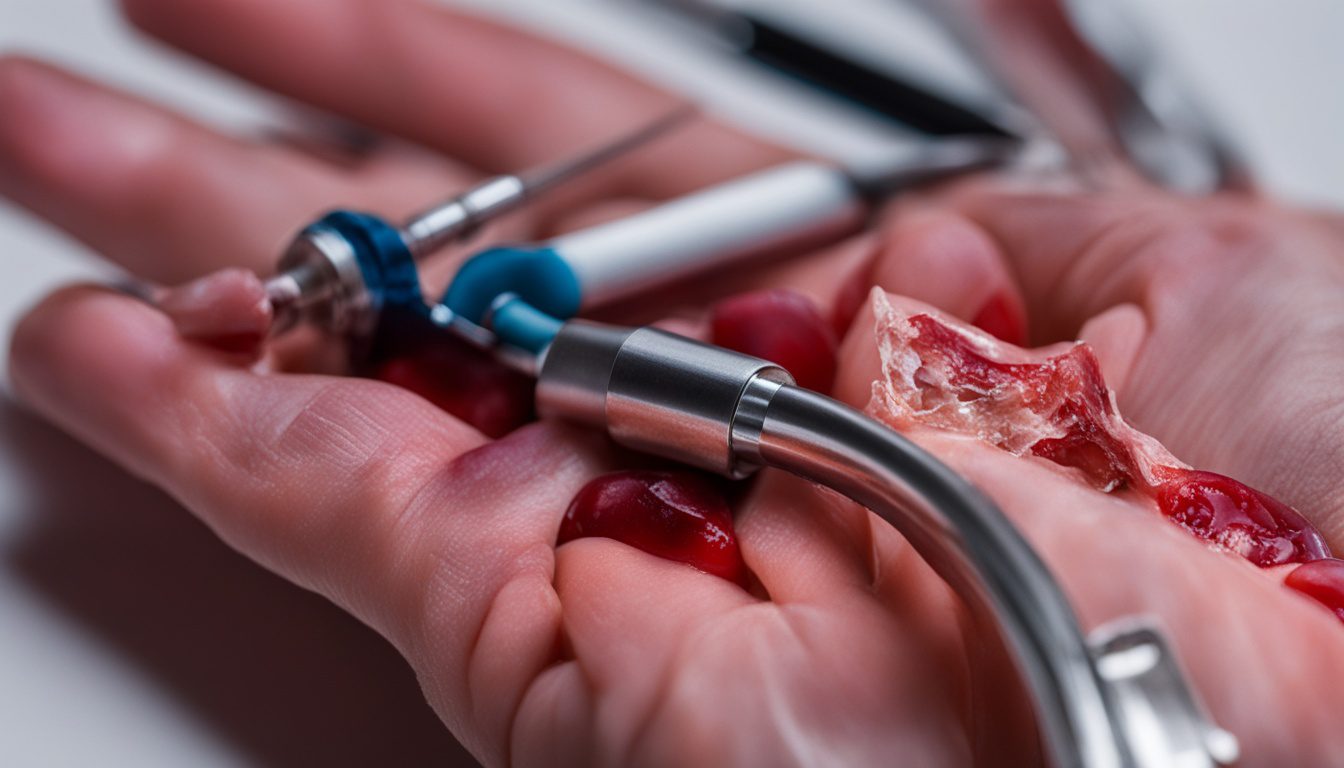Stenosing tenosynovitis, or trigger finger, causes finger pain and hand stiffness. It comes from an inflammation in the tendons. This makes the finger lock in a bent position and sometimes it pops when you move it.
We don’t know the exact cause, but it’s more common in women and those aged 40 to 60. Doing activities that need a lot of gripping or have had an injury can make trigger finger more likely.
Doctors often diagnose trigger finger by just listening to your symptoms and examining you. They don’t always need to do special tests. Treatments can include wearing a splint, taking medication, getting shots, or in some cases, surgery.
There is also hope in using stem cells to treat this condition. Stem cell therapy aims to use the body’s own healing power to fix the damaged tissue. This method might avoid the need for surgery. Scientists are excited about how this therapy could be a new way to treat trigger finger.
Key Takeaways:
- Stenosing tenosynovitis, also known as trigger finger, is a problem with the tendons. It causes finger pain and stiffness.
- It happens when the space for the tendon gets too small. This makes the finger get stuck in a bent position and often makes a popping sound.
- Doing things that need a lot of gripping or if you’ve hurt your hand can cause trigger finger.
- Doctors mainly diagnose this by listening to your symptoms and examining your hand.
- Treatments can include wearing a splint, taking medicine, or even surgery.
- Stem cell therapy is a new hope for treating trigger finger without surgery.
Symptoms of Stenosing Tenosynovitis
Stenosing tenosynovitis, known as trigger finger, shows several symptoms. People with this issue might feel finger pain and hand stiffness. They could also hear a pop or feel something catching when moving a finger.
Other symptoms include limited finger movement, swelling, tenderness, and a clicking noise. These issues are usually worse in the morning but can get better as the day goes on.
If not treated, this condition can make more fingers stuck, bent or straight. It’s vital to spot these signs and get help early to reduce discomfort. Early treatment can prevent further issues.
Managing Symptoms
To deal with these symptoms, certain self-care steps can be effective. Here’s what you can do:
- Rest your hand and avoid doing things that need you to grip often.
- Use ice packs to lower swelling and pain.
- Do gentle stretches to make your fingers more mobile.
- Take over-the-counter NSAIDs to ease pain and swelling. Be sure to check with a doctor first.
- Wearing a splint can help by supporting your fingers and reducing their movement.
When to Seek Medical Attention
If your symptoms keep up or get worse, see a healthcare provider. They can examine you to find out the cause. This early check can help stop the condition from getting worse and better your chances of recovery.
Causes and Risk Factors of Stenosing Tenosynovitis
Stenosing tenosynovitis, known as trigger finger, has many causes. It’s often linked to health issues like diabetes, gout, and arthritis. These problems can make the tendons in your fingers swell.
Jobs that need a lot of gripping can also make it worse. So can doing activities like playing an instrument or certain sports. The more you use your hands in these ways, the more likely you are to get trigger finger.
Hurting your hand or fingers can be a cause too. If you’ve had a bad fall or hit your hand, that could lead to trigger finger. This is because these injuries can hurt the tendons and make them inflamed.
Some hand conditions can cause trigger finger too. For example, carpal tunnel syndrome can mess up how your fingers work. It can even make trigger finger more likely. De Quervain’s syndrome, mainly on the thumb side, also increases your risk.
More women than men get trigger finger. It’s also very common in people aged 40 to 60. This could be because of hormones in women and changes in hand health as we get older.
While these things can make you more likely to get trigger finger, it’s not certain. Some people can still get it even if they don’t have these risk factors. It’s good to know about them, so you can try to prevent getting trigger finger.
Stem Cell Therapy for Stenosing Tenosynovitis
Stem cell therapy is a new and hopeful way to treat stenosing tenosynovitis. This is a condition that makes fingers hurt and hands stiff. The Greenberg Method is becoming well-known. It was made by Dr. Greenberg and uses a mix of Prolotherapy, Platelet-Rich Plasma (PRP), and stem cells. These help your body heal better.
PRP injections are a big part of The Greenberg Method. They help your tissues grow back and your wrist to heal. This method is not surgery, so there’s less chance of infection. And you’ll recover faster. It also doesn’t use opioids, which can be addictive. The Greenberg Method looks at the whole picture. It includes eating right, taking the right vitamins, and using new treatments to be healthier.
Stem cell therapy for this kind of tenosynovitis is still being studied. But it looks very promising. It may be a way for patients to feel better by helping their bodies heal naturally. This could mean less pain, better healing, and a higher quality of life.

